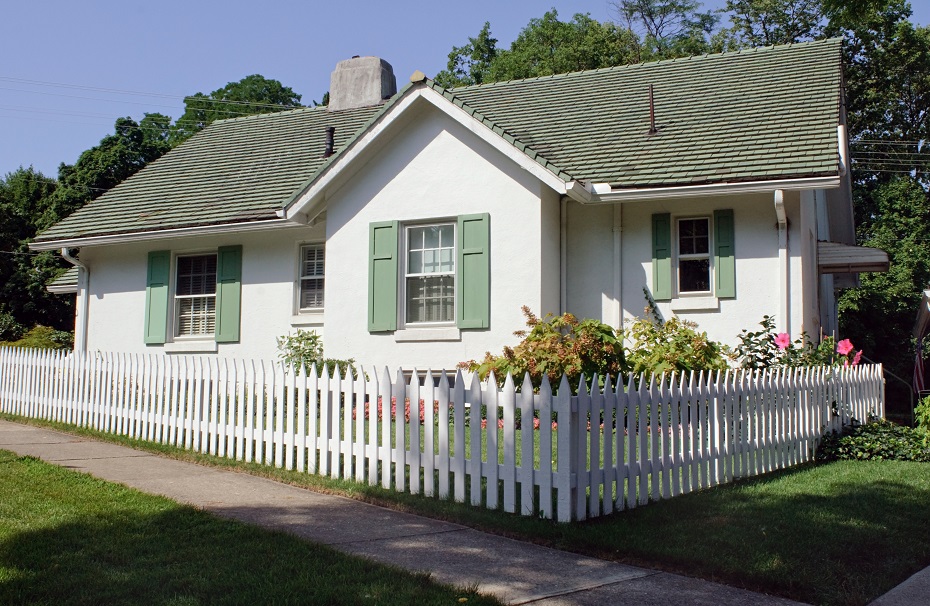Flat vs Sloped Roofs

The roof over your head keeps you warm and safe from the elements, so it’s important to consider the different kinds of roofing that can best your needs and environment. Roofs can be put into two main categories: flat and sloped. If you are building or buying a new home, hopefully, this little blog can help you decide what kind of roofing is best suited for your lifestyle and the environment around you. You also have to consider your budget, not just as you build your new home, but maintenance and cleaning over the decades. You then have to consider the functionality it provides to your home or business. Let’s compare the two so that you can make a careful and educated decision.
Flat Roofing
Flat roofs have both pros and cons. Let’s first establish that flat roofs aren’t necessarily “flat.” Every roof has some sort of tilt or slant to it so that when it rains, at least some of it runs down.
Flat roofs are typically used for commercial buildings and businesses but have been recently introduced to modern homes as they provide a modern and eccentric aesthetic. Many designers like the look of flat roofs because it looks more modern and contemporary compared to sloped roofs, which have a more rustic and classic feel to them. For example, flat roofing allows for the placement of skylights and larger windows, thus allowing for less light to be used indoors during the day. This means that your electric bill can go down. Also, with more sunlight, comes more warmth. No more turning on your heater at 2 o’clock in the afternoon, but this can also backfire during the warm summer months. If you need more storage space inside of your home or business, a flat roof might be the way for you to go. Flat roofing allows for more space towards your ceilings and for more shelving throughout your home or office. Since the roof is flat, you can put your air conditioning unit on the roof, as well as any other appliances that can be placed outdoors. Putting appliances on the roof as opposed to just right next to the building, makes the inside much quieter in comparison. Flat roofs also allow for better placement of solar panels because they would be receiving sunlight from all angles. Flat roofing is cheaper to install but is ultimately more costly over time. These roofs typically have issues with water damage and leaks because it is much more likely to pool in areas. They need to be more frequently inspected and maintained in order to prevent leaks, and in worst-case scenarios, collapse. Flat roofing also provides a bit less stability and structure to buildings. When harsh weather events strike, flat roofs are fine but not as safe as sloped roofs.
Sloped Roofing
Sloped roofs are a timeless classic. This is what we typically think about when we think of houses. It’s a nice fairytale image. These kinds of roofs are mostly used for homes and rarely ever for commercial buildings as they require several peaks, which is just plain impractical and strange to look at. Sloped roofs are ultimately very sturdy and cost-effective since they do last a few years longer than flat roofs without needing repairs or replacements. You would not need to spend as much money on repairs and regular maintenance than you would with a flat roof. This is because slopped roofing holds up better against rain and snow since it tends to slide off and properly drain, thus providing more overall longevity. Sloped roofs are a little hard to clean and repair though. This is simply because it is rather difficult to properly stand on it and safely use tools. Sloped roofing also typically offers less space than flat roofing. This means cramped attics and lower ceilings, and less overall room for storage. There will also be less room for windows, meaning less natural light, and less practicality for solar panels, meaning more electricity use. Solar panels on sloped roofs are only likely to get proper sunlight during certain times of the day or not at all. While sloped roofs are not good for trying to capture sunlight, they are much more capable of withstanding harsh weather conditions without need costly maintenance, repairs, or even replacements.
There are many aspects of roofing to consider when planning a new home or commercial building. We here at El Paso Roofing can not only help you decide what’s best for what you need, but we can get right to work once you do. Call us if you have any questions.

